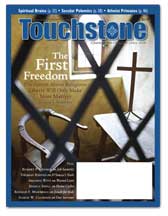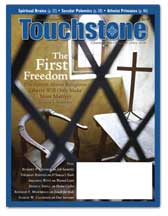Telling Terrifying Fairy Tales Is Good?

That terrifying fairy tales are good is one of the conclusions of an article in the April edition of Touchstone—A Journal Of Mere Christianity.
The premise for this article is that “In Removing the Fear from the Story of Jonah, Children’s Versions Remove the Gospel, Too”.
The author, Ronald F. Marshall, compared “mountains” of children’s books, bibles, and videos about Jonah, and found that they had removed the horrific details of the book and replaced it with comfy sentimentality. This is how the author words it:
“Jonah is a horrifying book, with its raging storm and fierce sea-monster, a suicide attempt and near drowning, and, at the end, a confrontation with a massive enemy city. But in American children’s literature it is largely a harmless adventure story, all about travel and intrigue, underwater hideouts, success and fame.”
The stories, largely, glosses over some or all of these details:
- Jonah’s Disobedience
- Jonah’s Attempted Suicide
- Jonah’s Sacrifice
- Jonah’s Damnation (being eaten alive!)
- Jonah’s Sulking
- Jonah’s Unforgiveness
Mr. Marshall’s conclusion?
“The key, I think, is in being as terrifying as the classic fairy tales … these fairy tales stand with all their frightfulness—insisting on telling the truth. And the truth is indeed scary. And it is a truth that children can handle, indeed need to face.”
How does this apply to writers of Christian Fantasy? The kid-gloves aren’t necessarily needed. Yes, we need to be judicious in making sure every horrifying thing we include enhances and progresses the plot, but we do a disservice if we purposefully excise scary things that, in and of themselves, can teach godly lessons.
This is a fascinating article with incredible details. Please go and take a look yourself.
